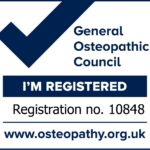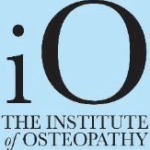As we journey through life, aging is an inevitable process that brings with it a myriad of changes, both physical and emotional. Among these changes, one of the most significant concerns for many individuals is maintaining mobility and independence as they age gracefully. While aging is a natural part of life, it doesn’t have to mean surrendering to limitations and restrictions. Osteopathy, a holistic approach to healthcare, offers promising avenues for supporting seniors in maintaining their mobility, independence, and overall well-being well into their golden years.
Understanding Osteopathy
Osteopathy is a system of healthcare that emphasises the interrelationship between the body’s structure and its function. Developed in the late 19th century by Dr. Andrew Taylor Still, osteopathy operates on the principle that the body has an innate ability to heal itself, given the right conditions. Osteopathic practitioners view the body as a dynamic unit of function, where optimal health is achieved through the balance and harmony of its various systems.
Unlike conventional medicine, which often focuses on treating symptoms, osteopathy takes a holistic approach, addressing the root causes of dysfunction rather than just alleviating the outward manifestations. Osteopathic treatments typically involve hands-on techniques such as manipulation, massage, and stretching, aimed at restoring mobility, improving circulation, and enhancing the body’s self-regulating mechanisms.
The Impact of Aging on Mobility
As we age, our bodies undergo a series of changes that can affect mobility and overall function. Joint stiffness, decreased muscle mass, reduced flexibility, and diminished bone density are just a few examples of the physiological changes that commonly occur with advancing age. These changes can lead to a variety of mobility issues, ranging from difficulty walking and balancing to chronic pain and stiffness.
Furthermore, age-related conditions such as osteoarthritis, osteoporosis, and degenerative disc disease can exacerbate these mobility challenges, posing significant barriers to maintaining independence and quality of life. Left unaddressed, these issues can contribute to a decline in physical function, increased risk of falls and injuries, and a loss of autonomy.
Osteopathy: A Pathway to Aging Gracefully
Osteopathy offers a holistic approach to addressing the mobility concerns associated with aging, focusing on optimising the body’s structure and function to promote overall well-being. Through gentle manipulation, mobilisation, and soft tissue techniques, osteopathic practitioners work to restore alignment, improve joint mobility, and alleviate pain and discomfort.
One of the key principles of osteopathy is the concept of treating the body as a whole rather than just focusing on isolated symptoms or areas of dysfunction. By addressing underlying imbalances and dysfunctions throughout the body, osteopathic treatments aim to enhance the body’s natural ability to heal and self-regulate, facilitating greater mobility and function.
Benefits of Osteopathy for Seniors
For seniors seeking to maintain their mobility and independence as they age, osteopathy offers a range of potential benefits:
- Pain Relief: Osteopathic manipulation techniques can help alleviate pain and discomfort associated with age-related conditions such as arthritis, joint stiffness, and muscular tension.
- Improved Mobility: By restoring joint mobility, increasing flexibility, and enhancing muscle function, osteopathy can help seniors move more freely and comfortably, reducing the risk of mobility limitations.
- Enhanced Circulation: Osteopathic techniques promote improved blood flow and lymphatic drainage, which can support tissue healing, reduce inflammation, and enhance overall vitality.
- Fall Prevention: Through targeted interventions to improve balance, coordination, and proprioception, osteopathy can help reduce the risk of falls and related injuries, which are common concerns for seniors.
- Stress Reduction: Osteopathic treatments are often accompanied by a sense of relaxation and well-being, helping to reduce stress, anxiety, and tension, which can have a positive impact on overall health and mobility.
Integrating Osteopathy into a Holistic Wellness Plan
While osteopathy can be highly beneficial for seniors, it is most effective when integrated into a comprehensive wellness plan that addresses the various aspects of aging gracefully. Alongside osteopathic treatments, seniors can benefit from incorporating other holistic practices into their routine, such as:
- Regular Exercise: Engaging in regular physical activity, including strength training, balance exercises, and gentle stretching, can help seniors maintain muscle mass, flexibility, and overall mobility.
- Nutritious Diet: Eating a balanced diet rich in nutrients, vitamins, and minerals is essential for supporting bone health, muscle function, and overall vitality.
- Mind-Body Practices: Practices such as yoga, tai chi, meditation, and deep breathing exercises can help seniors manage stress, improve relaxation, and enhance mental clarity and focus.
- Social Engagement: Staying connected with friends, family, and community can help seniors maintain a sense of purpose, belonging, and emotional well-being, which are important aspects of aging gracefully.
Aging gracefully is not just about growing older; it’s about maintaining vitality, mobility, and independence well into our senior years. Osteopathy offers a holistic approach to healthcare that can support seniors in achieving these goals by addressing the root causes of mobility issues and promoting overall well-being. By integrating osteopathy into a comprehensive wellness plan that includes exercise, nutrition, mind-body practices, and social engagement, seniors can empower themselves to age with grace, dignity, and vitality. With the right support and resources, the journey of aging can be one of continued growth, resilience, and joy.






fab.